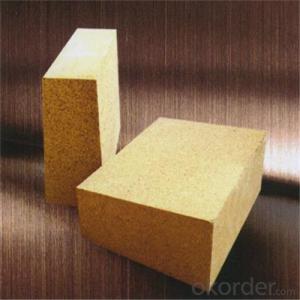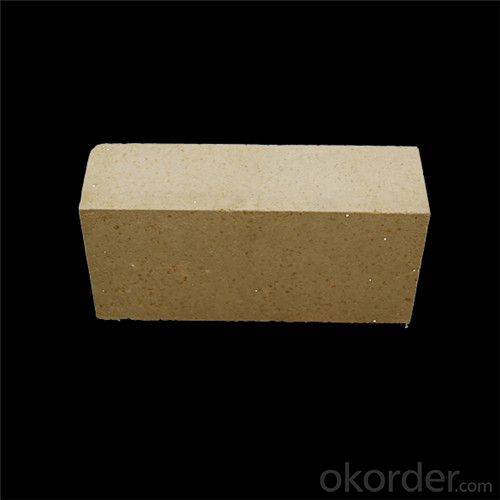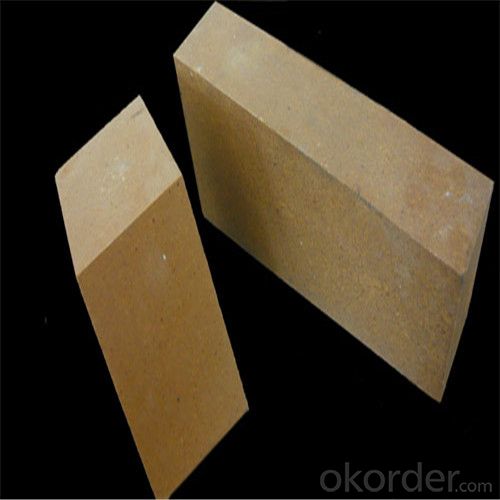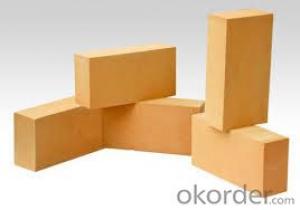Fireclay Brick - High Resistance to Thermal Shock
- Loading Port:
- Tianjin
- Payment Terms:
- TT OR LC
- Min Order Qty:
- 10 m.t
- Supply Capability:
- 10000000 m.t/month
OKorder Service Pledge
OKorder Financial Service
You Might Also Like
General Information of Fireclay Bricks
CMAX fireclay bricks are made from clinker clay. The alumina content ranges from 36% to 48%.
Image of Fireclay Bricks

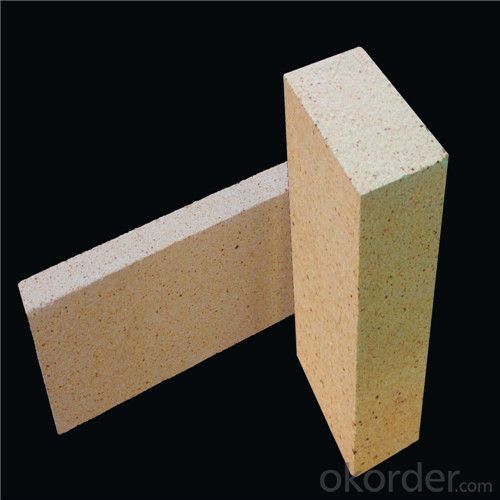
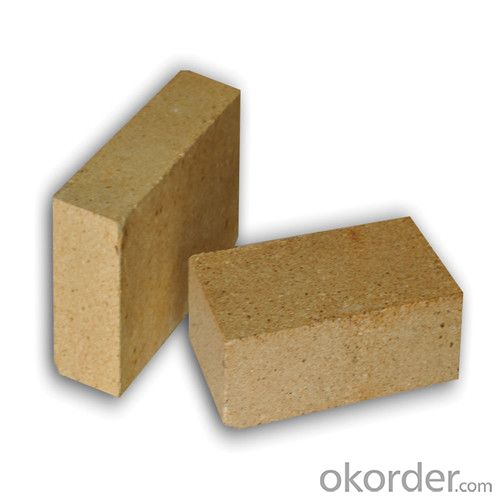
Technical Data of Fireclay Bricks

Feature of Fireclay Bricks
Low thermal conductivity
High refractoriness
High mechanical strength
Excellent thermal shock resistance
Application of Fireclay Bricks
CMAX fireclay bricks are commonly applied in blast furnace, hot blast furnace, teeming ladle, glass furnace, etc.
Why Choose Us
l We are a government owned company with ISO certificate.
l We are listed in Global Fortune 500 with D & B report.
FAQ
Q1: How do you control the products quality?
A1: With strict quality control system throughout the materials selection and production process, our refractory and ceramic fiber products quality is effectively controlled to meet customer requirements.
From the raw materials selecting, our quality control begin. The quality certificates of raw materials are required and each batch will be tested before using. During production, the quality control are conducted by workers and then each piece will be sorted and examined by quality supervis
Q2: What`s the lead time for my order?
A2: It depends on customers’ requirements and our production schedule. And usually we need 30-60 days for refractory bricks,10-25 days for unshaped refractory materials and 10-20 days for ceramic fiber blankets.
Q3: Can you offer Door-to-Door delivery?
A3: Yes, but only for some countries such us U.S., UAE, Saudi Arabia, Iran, and Russia, etc.
Q4: What is the minimum quantity?
A4: There is no minimum order quantity. Depending on the item and processing, there may be a minimum production required, however we can offer a quotation based only on the quantity you need.
Q5: Can you give me a brief introduction of the application of your products?
A5: CNBM (China National Building Material) core refractory business comprises the production, sale and installation of high-grade refractory products, the development and implementation of customized system solutions as well as rendering outstanding services for the key industries in Glass, Iron& Steel, Petrochemical, Cement, Ceramic and Nonferrous Metals.
- Q: The stove which made of refractory bricks and fireclays will produce cracks after being used. How to solve this problem?
- The use of low expansion materials will be better. But as for the stove, the appearance of crack is attributed to the selected materials or the environment. And when the temperature is not high, there still seems to be crack, so through expansion joint reservation, not allowing itself to crack
- Q: Small size black brick can replace refractory bricks for wood burning fireplace?
- No, black brick has no thermal insulation effect.
- Q: How to choose the proper refractory bricks when buying the refractory bricks?
- Crack condition. 4. 6. Inspection of dimensions. Conditions of pits and swells and lack of edges or angles. The inspection of refractory bricks' appearance quality and the condition of the affecting with damp.
- Q: What materials make of clay insulating fireclay brick?
- The aluminium silicate refractories whose aluminium oxide content is 30% ~ 46% is called clay-based refractories. Clay products mainly consist of mullite, glass phase, cristobalite and quartz.
- Q: What are the release agents of refractory bricks?
- Alkalinity, the production process of alkaline, acid and alkali resistant transparent instant thickening powder, you can adjust the proportion according to the cost and needs of quality, environmental protection: One: Add the preservative into water to mix, after soaking one hour, then mixing evenly the production ratio, and then add the super core release agent into water to mix, add flavor pigment masterbatch into water to mix with water mixing, ensure completely dissolved, then add the waste oil, falvor is appropriate amount= release agent. Two, the newest recipe of release agent super core release agent masterbatch, waste engine oil, water, instant acidproof and alkaliproof transparent thickening powder, wire drawing powder, preservative, flavor and pigment= release agent super core wire drawing powder with water mixing, it is the most newly developed special core masterbatch and engine oil of Chengdu Hengfeng Hongye detergent factory, and it doesn't contain toxic solvents, especially 1, it has the following features, after thickening more than half an hour or so, mix evenly is ok, in a few seconds will waste oil and alkali: 10% of waste engine oil, 20% of release agent core masterbatch, 88% of water, 500g instant acidproof alkaliproof transparent thickening powder, 80g wire drawing powder, 1g pigment and preservative and lubricating oil and industrial grease, these integrate with water.
- Q: should clay or refractory cement be used to lay refractory bricks?
- structure strength of this brick lining is not good, apply some refractory mud, only use some virgin clay and corundum, many of the traditional approaches are very simple, mullite and carbon slurry, the specific products are selected according to the selected material and water glass or organic binder. binding agent can choose phosphate, silica and high alumina, clay is one part of the refractory clay, there are many kinds of refractory slurry according to the material, clay-based mud does use refractory cement and corrosion resistance is low
- Q: Why masonry walls must not be mixed with clay bricks?
- If a masonry wall is added to the concrete structure. Under the influence of lateral force (wind force, earthquake force), the performance of masonry wall and concrete wall is different, the former is rigid and almost unable to bear deformation, while the latter can have certain deformation. The former cannot bend and the latter can bend...... As a result, the masonry walls were destroyed first and lost, and then the members supported by the masonry walls were destroyed, and the whole building was filled with cups.
- Q: What is the advantage of the ceramic fiber material compared with the refractory brick?
- Ceramic fiber material is heavier than refractory bricks, property of machinery operation, low heat capacity, and has high anti-stretchability and good thermal shock resistance, low thermal conductivity make its thermal insulation effect is ten times than refractory brick, it won't has crack in sudden coolness and heat, and the construction is much easier than that of refractory brick, not delaying the production.
- Q: what is the ratio of refractory mortar and refractory bricks, such as how much refractory mortar is needed for a ton of refractory bricks?
- Go to the refractory factory to buy some refractory clay that is of the same material as refractory bricks, generally boiler uses clay refractory mortar.
- Q: Why is there cracks in the use of refractory bricks?
- Several reasons for the emergence of cracks: (1) temperature difference stress (2) mechanical stress (3) crystal type change stress
Send your message to us
Fireclay Brick - High Resistance to Thermal Shock
- Loading Port:
- Tianjin
- Payment Terms:
- TT OR LC
- Min Order Qty:
- 10 m.t
- Supply Capability:
- 10000000 m.t/month
OKorder Service Pledge
OKorder Financial Service
Similar products
Hot products
Hot Searches
Related keywords
